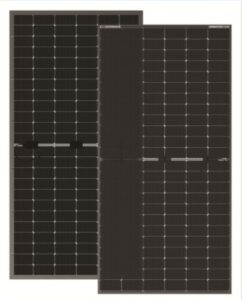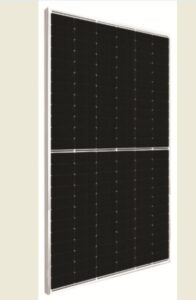Navitas Solar is leading solar module manufacturer that also offers EPC services to both grid-scale and rooftop solar projects. In this interaction, we have Sunay Shah, Director-Projects, Navitas Solar, discussing his company’s current activities and growth plans, apart from offering keen insights in India’s solar power industry. Shah feels that the country’s rooftop solar potential has been largely untapped but the recent Pradhanmatri Suryoday Yojana will provide the much needed fillip. On the solar equipment value chain, Sunay Shah is optimistic about India’s self-reliance improving considerably in the coming years.

Let us start by understanding, in brief, the various services offered by Navitas Solar. Specifically, do you undertake only rooftop solar or do you deal in ground-mounted solar as well?
Navitas Solar strives to provide one of the best solutions for sustainable solar electric power with one of the most advanced production lines in India having manufacturing capacity of 1.7 GW per year. Moreover, we have our own EVA (ethylene vinyl acetate) manufacturing plant as a backward integration in the same facility. We are already among the top 10 leading module manufacturers.
Navitas Solar has served 1,000+ customers across India for various government, semi-government and private projects. We are happy to share that we are a carbon-neutral organization.
We offer products like polycrystalline, Mono PERC and now TOPCon modules from 5 to 720 watts per panel. We offer solar EPC services with the execution ride proper from the minimal solar PV capability of 5kW to megawatt scale rooftop as well as ground-mounted solar projects.
Having its EPC crew in Gujarat and Maharashtra, Navitas Solar is actively engaged with residential, commercial and industrial projects, be it ground mount or rooftop! We have dedicated and separate teams for rooftop and ground-mount projects, as both the segments are different.
What is your view on India’s efforts to build domestic capacity for solar modules? How is the government’s ALMM programme shaping up?
India’s efforts on building domestic capacity for solar modules are appreciable. In 2023, around 13.5 GW of renewable energy capacity was added with an investment of Rs.74,000 crore.
India has captured fourth position in global installed renewable energy. Looking at this, we strongly believe that India will lead the global solar market in terms of manufacturing. Additionally, domestic manufacturers of solar modules and other solar products are already expanding their capacity with the encouragement of Indian government. ALMM, which will be officially implemented by April 2024 is a big step towards encouraging Indian module manufacturers,.
 What is your take on India’s capabilities with respect to developing backward integration to manufacturing solar wafers/cells?
What is your take on India’s capabilities with respect to developing backward integration to manufacturing solar wafers/cells?
India has achieved tremendous growth in forward integration of solar energy. Now, talking about developing backward integration to manufacturing solar wafer/cells, we see now many domestic players are entering into this market. We see many domestic players are entering in the solar market not just in wafers/cells but also in solar encapsulants, glasses, junction boxes, ribbons, frames. We are sure we will use all the products related to solar —big or small— manufactured in India in the time to come. With that, we will be fulfilling the motive of “Aatmanirbhar Bharat” in a true sense.
Returning to Navitas Solar, do you also assist customers with gross and net metering features?
Yes, we do assist our customers with gross and net metering features and all of the document compliances required in the solar EPC projects. We assist our customers from end-to-end project execution services like onsite inspection and measurements, CEI inspection and meter testing, material procurement, planning & designing of solar power plant and complete installation of solar plant.
What is your view on the apparent differences in net metering policies of various state government utilities?
Yes, different states in India have different net & gross metering policies state wise. Nationally, government applies a common policy and then policies are modified and implemented as per the state’s requirements by the state government. Some states like Gujarat, Maharashtra, Karnataka, Andhra Pradesh etc. are becoming very aggressive in installing solar by implementing user-friendly solar policies.
Having different policies in different states sometimes becomes too difficult to understand and track for the developers but at the same time it is essentially required by that particular state’s geography and other resources.
Currently, what is your total portfolio of solar projects commissioned and under-execution?
We have installed 20 mw of solar EPC projects until now at pan India level. To point out few major projects of EPC services, 402kW solar plant at JFE Shoji Steel India Ltd, Maharashtra, 4-mw in-house captive solar park at Kalpataru Global Alloys, Andhra Pradesh, 1.4-mw at Sumicot Ltd, Bharuch, and many more.
With this Navitas has left a terrific mark with putting a degree up in optimum designs, quality assurance and best economic solutions to the client. We want to focus on large-scale supply and retail EPC segments up to 10 mw single projects for which there is niche market.
What is your view on the Prime Minister’s newly announced scheme envisaging 1 crore solar rooftops, mainly in the residential sector?
Pradhanmatri Suryoday Yojana has been announced under which 1 crore of rooftop solar will be installed at homes is a terrific and bold move to increase penetration of rooftop solar in the residential sector in India.
At Navitas Solar, we thank and appreciate Indian Government for this strong step which will not only reduce electricity bills of the consumers but will also make India self-reliant. The scheme will attract green investments up to Rs.12,500 crore, expand solar capacity up to over 30 GW, create more jobs, and boost local manufacturing industries of solar products.
What are the main challenges affecting rooftop solar progress in India? What policy recommendations to you advocate towards this?
 Delayed subsidy disbursal, state-wise dynamic policies, lack of awareness in public, dynamic policies of Central government for import-exports are some of the roadblocks in the pathway of rooftop solar’s progress in India.
Delayed subsidy disbursal, state-wise dynamic policies, lack of awareness in public, dynamic policies of Central government for import-exports are some of the roadblocks in the pathway of rooftop solar’s progress in India.
If India wants to become a global PV leader, then in each area, we need to improve as a nation. Residential sector has a huge potential to grow in future. When we talk about rooftop solar installation, it is perceived only as C&I as the residential rooftop solar has very small percentage amongst the total rooftop solar installation in India.
Recent policy changes in rooftop solar including various subsidy announcements will certainly encourage this sector’s growth. Apart from that, consumer awareness has also helped to grow the residential rooftop solar market. Nowadays, people of tier-2 and tier-3 cities are gaining knowledge about rooftop solar and are moving forward towards implementation.
Given that India’s renewable energy ambitions are sharply focused on solar energy, how do you see the road ahead for Navitas Solar? What would be your main business growth drivers?
India’s goal is to achieve 500 GW of renewable energy installed by 2030 from which 50 per cent would be about solar energy. Looking at this, the road head for Navitas Solar seems to be the brightest in upcoming years. As in any of the solar projects, important cost is of solar modules and we are one of the leading module manufacturing company in India since last 11 years.
As we have our own solar module manufacturing facility, it becomes an added advantage for our solar EPC customers as they have the same vendor both for EPC and for panels. Some of the driving factors in our main business are High RoI, favorable government policies, increase in Grid tariffs, cheaper and environment-friendly solutions, increase in per capita income and per capita electricity consumption.


